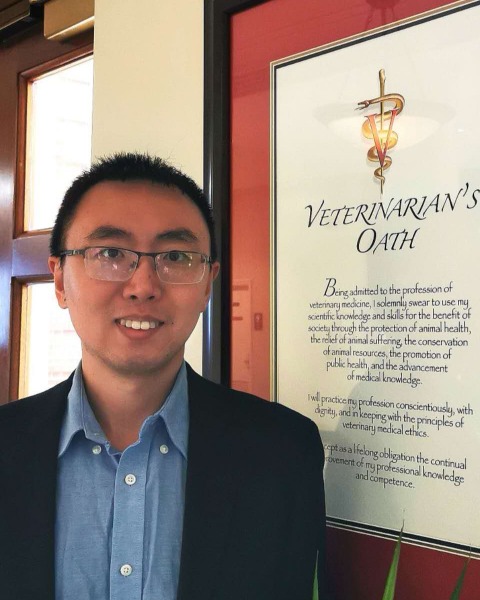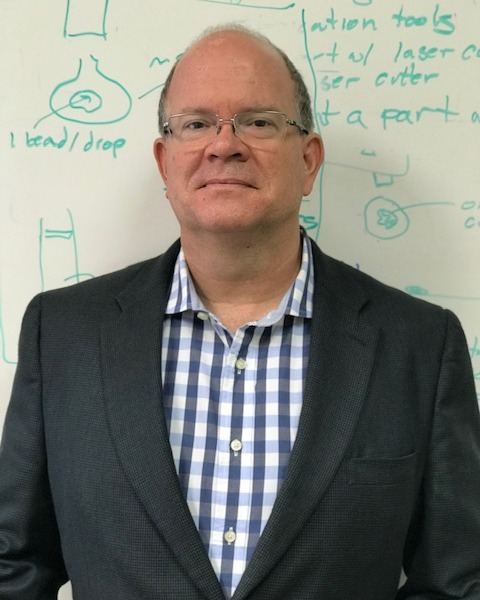Cancer Technologies
(F-234) Design and Application of pDA Treatment Method for Polylactide Fibers to Enhance Cell Separation of MCF-7 Cells
- EE
Emily Evans
Student
Wesleyan College
Macon, Georgia, United States 
Weitong Chen, PhD in Biomedical Engineering (2017-2021), Mississippi State University (he/him/his)
Postdoctoral Fellow
University of Georgia
Athens , Georgia, United States
Timothy Burg, PhD
Professor
University of Georgia, United States
Karen Burg, PhD
Harbor Lights Endowed Chair & Professor & Vice President for Research
University of Georgia
Athens, Georgia, United States- CL
Courtney Long
Graduate
University of Georgia, United States
Presenting Author(s)
Co-Author(s)
Primary Investigator(s)
Last Author(s)
Co-Author(s)
The American Veterinary Medical Association reports 1 in 4 dogs in their lifetime will be diagnosed with a neoplasm or tumor [1]. Forms of diagnosis and detection of cancer include liquid biopsy, fine needle aspiration, and imaging technologies such as ultrasonography and radiography. These methods may be inconclusive, expensive, require specialty appointments obtained by referral only, involve extended time for expert results to return, and occur when the cancer is already at an aggressively untreatable stage. Previous work in the Harbor Lights Laboratory focused on developing and engineering a novel, rapid multi-cancer, early detection test via separating and detecting the cells taken from a heterogeneous population of cancerous and healthy cells [2,3,4]. The device employs the wicking capacity of lobed fibers to separate cells based on physiological characteristics such as cell size and deformity, as by chromatography. In the present study, the surface of polylactide (PL) fiber bundles were partially functionalized with hydrophilic treatment to optimize the wicking capacity of the fibers to separate human breast cancer cell (MCF7) populations. This was accomplished by comparing completely treated, ⅔ treated and ¾ treated lengths of the fibers dyed using an original prototype design.
Materials and Methods::
Polylactide filament was extruded through a 3D Printer with modified die nozzle to produce lobed fibers. The extruded fiber was laser cut into 35-mm segments. Fibers were treated in 10 mM Tris-HCl buffer with dopamine powder. An attachment for a 250-milliliter beaker was created to suspend fibers at a fraction of total fiber length. The evolved prototype for partial and complete fiber treatments used laser-cut acrylic plates. At the top of the device, 60 1-mm diameter holes were cut. An air tube ran through the device to disperse bubbles and displace the surface level. Fibers treated for ⅔ coverage had exposed lengths of 57% of total length and fibers treated for ¾ coverage had exposed lengths of 66%. Fibers treated for full coverage were completely submerged. The fibers were arranged in bundles of three fibers [4].
Four groups of three bundles wicked MCF-7 cells. Air-dried alginate caps covered the top 2 mm of each bundle [3]. Approximately 300,000 cells/300 µL stained with CellTracker Red were added to the sample well of a modified cryovial for each bundle. A volume of 200 µL of phosphate buffered saline was added to the sample well. The cells wicked for 20 minutes. The rehydrated alginate caps were removed and observed using an EVOS microscope at 10X magnification. Differences between average treatment percentage were assessed by paired t-test analysis and differences in the length of treatment and cell count were assessed by one-way ANOVA.
Results, Conclusions, and Discussions::
Results and Discussion: When using the original prototype to treat ⅔ and ¾ of the total length of the fiber, the average lengths treated were 68% with a standard deviation of 0.03 and 77% with a standard deviation of 0.02 (Figure 1.). Visible cells were manually counted from alginate caps after wicking. Although not significant, the cell counts show that the positive control and the ¾ experimental groups had the highest averages. The fully treated fibers had an approximate count of 22 cells and a standard deviation of 16. The ¾ treated fibers had an approximate count of 25 cells and a standard deviation of 31 (Figure 2.). All groups except the negative control had high standard deviations, suggesting the experimental procedures need refinement.
Conclusions: The fiber treatment prototype used in this experiment successfully treats fibers in full and at varying fractional lengths, suggesting it to be a robust method for future experiments. Results were inconclusive when attempting to determine if partially treated fibers (⅔ or ¾) increase the population of tumor cells after 20 minutes of wicking; therefore, more treatments must be conducted. Future investigations of efficient alginate cap collection and treatments with heterogeneous cell populations are ongoing to improve the process of wicking fiber-based cancer diagnosis in general veterinary medicine.
Acknowledgements (Optional): :
This work was supported by the Harbor Lights Endowment and the National Science Foundation Research Experiences for Undergraduates (REU) Grant 1950581.
References (Optional): :
1. American Veterinary Medical Association. (2023). Cancer in pets. (n.d.). https://www.avma.org/resources/pet-owners/petcare/cancer-pets,
2. Tabbaa, S.M., Sharp, J.L., Burg K.J.L., (2017), “Characterization and Separation of Cancer Cells with a Wicking Fiber Device”, Ann Biomed Eng, 45:12.
3. Burg, T., Collins, K., Long, C., Kim, H., Chen, W., Burg, K., (2022), “Promoting and Assessing Cell Capture in a Wicking Fiber Cancer Predictive Tool”, Transactions of the 2022 Annual Meeting and Exposition of the Society For Biomaterials.
4. Long, C., Collins, K., Chen, W., Burg, T., Burg, K.J.L, (2023), “Biomaterial Optimization for Cell Separation in Wicking Fiber Bundles”, Transactions of the 2023 Annual Meeting and Exposition of the Society for Biomaterials.
